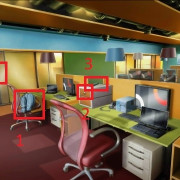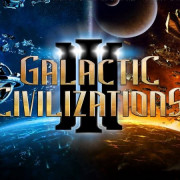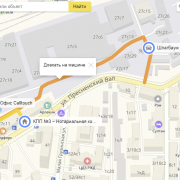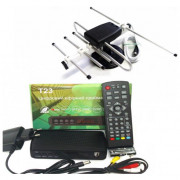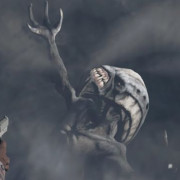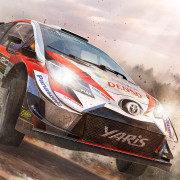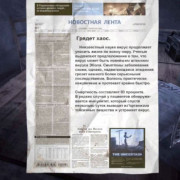How to create «minecraft» maps with worldpainter
Содержание:
- What is WorldPainter?
- Build WorldPainter
- Run WorldPainter
- Présentation de World Painter
- Using WorldPainter in your own code
- Check out the source code
- Install missing dependencies
- Mixing Populate with other layers
- Installing a Custom Terrain
- Applying a Layer Directly
- How do I change what Minecraft does when I use Populate? How do I get rid of all the small water and lava lakes?
- Export from the command line
- There is water underneath all of my land
- Applying a Terrain Type Directly
- Loading a Height Map
- JIDE Docking Framework
- Comments
- Apple Java Extensions
- Set up Maven toolchains
- Build WorldPainter
- Is Multiplayer supported? How do I put the map on a Minecraft server?
- How do I change the water level on an existing world or map?
- WorldPainter runs out of memory
- Reduce WorldPainter’s memory usage
- Export the Map as a Minecraft Map
- Types of Tools in WorldPainter
- Create a New Minecraft World
- Types of Terrain in WorldPainter
- How do I add custom brushes?
What is WorldPainter?
WorldPainter is an interactive map generator for Minecraft that allows you to “paint” landscapes as you would in Microsoft Paint or another paint program. The program starts users off with a basic Minecraft map, which can be edited with numerous terrain, material, tree, and shape brushes. WorldPainter is a great resource for Minecraft players looking to create their own themed or multiplayer maps.
WorldPainter is free to download, use, and distribute as open-source software licensed under the GNU Public License. The program is not affiliated with Mojang, the makers of Minecraft, in any way and was created by pepsoft.org. WorldPainter itself is largely self-explanatory: the buttons are all defined, and the controls are easy to understand. If you are unfamiliar with paint programs, however, WorldPainter can seem a bit daunting.

Learn how to use WorldPainter, a paint program that helps you generate and create maps with brushes, layers and other tools!
Build WorldPainter
Now you can build WorldPainter itself. Execute the following command from inside the WorldPainter directory, or use your favourite IDE to build the WorldPainter module or invoke the install Maven goal on it. There are some rudimentary unit tests, but they take a while to run and don’t contribute much, so I recommend skipping them:
mvn install -DskipTests=true
Repeat this whenever you change code in any of the modules below the WorldPainter directory. Or of course use your favourite IDE, preferably one with good Maven support, to build the project.
Run WorldPainter
Once it is built, you can run WorldPainter from the command line with the following command, executed from inside the WPGUI directory:
mvn exec:exec
You can also define a run configuration in your favourite IDE. The main class is .
Présentation de World Painter
Ce logiciel se démarque clairement des autres par le biais de son aspect plutôt simpliste et optimisé, afin de répondre aux attentes des utilisateurs les plus exigeants.
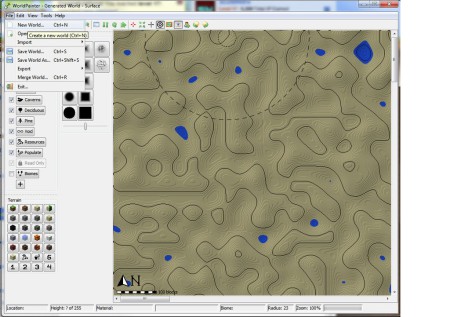 Interface du logiciel et carte générée
Interface du logiciel et carte générée
World Painter est pourvu de nombreux boutons permettant de varier les résultats : on peut ainsi construire une gigantesque montagne comme une petite forêt de pins. Il offre aussi la possibilité de créer des pyramides plus ou moins grandes, des souterrains, de grandes fosses, etc.
On appréciera aussi la possibilité de visualiser en 3D les résultats de la création en direct, afin d’avoir une légère impression du rendu en jeu.
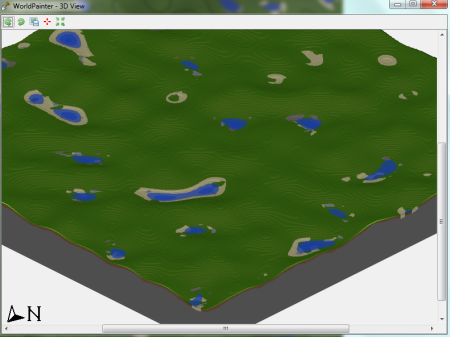 Vue en 3D de la carte
Vue en 3D de la carte
Enfin, il est aussi envisageable de gérer les différents biomes : on peut donc choisir d’avoir un monde entièrement désertique comme uniquement marécageux. Il est bien évidemment possible de les répartir dans plusieurs zones pour augmenter la diversité des lieux ! Voici ses autres fonctionnalités :
- Peinture personnalisée du biome
- Créez vos propres brush personnalisés
- Ajouter au monde des objets personnalisés à partir de fichiers bo2 ou de schémas
- Personnaliser l’emplacement et la fréquence des minerais et des ressources souterraines
- Ajouter de la neige et de la glace
- Des outils faciles à utiliser, mais flexibles et puissants qui ressemblent à de la peinture
- Créer des océans, des masses terrestres, des plaines et des montagnes
- Changer le type de terrain, ajouter des arbres et créer des cavernes
Using WorldPainter in your own code
If you only want to write your own code making use of WorldPainter, rather than make changes to WorldPainter itself, then you don’t need to build WorldPainter! The WorldPainter binaries, along with Javadoc and source code jars, are in Maven Central. For details, see this page.
Check out the source code
The WorldPainter source code is hosted on GitHub: https://github.com/Captain-Chaos/WorldPainter
Check it out from there, or fork it and then check out your own fork. The command for checking out the code anonymously from the command line is:
git clone https://github.com/Captain-Chaos/WorldPainter.git
Install missing dependencies
WorldPainter uses some dependencies which are not present in Maven Central, either because they are commercial products, or they are too old, or the creators aren’t aware of Maven. Some of these dependencies (JPen; the NetBeans Dark Look and Feel) are hosted in a private Maven repo on www.worldpainter.net (see the pom.xml for the WorldPainter module), but some you will have to download and install manually:
TODO: JPen has native libraries, which are currently missing (meaning the tablet support won’t actually work. This has yet to be incorporated in the build somehow.
Mixing Populate with other layers
If you mix Populate with the other layers and features of WorldPainter (some of which are enabled by default) you might get unexpected or unintended results. It’s important to know what it does and what the consequences are.
For instance, WorldPainter by default already generates underground ores, water and lava (as controlled by the Resources layer, which is turned on everywhere by default on the Dimension Properties or Export screen). If you leave that turned on, and then also use Populate, you will get double the resources. This may or may not be what you want, but you should be aware of it.
Another example is forests. If you use one of WorldPainter’s tree layers (Deciduous, Pine, Swamp or Jungle), WorldPainter will generate trees in those areas (with a size and density determined by the intensity with which you painted the layer). By default (if «automatic biomes» is enabled), it will also set the biome in those areas to «forest» (or «taiga» if you also use the Frost layer in the same area). That means that if you use Populate in the same location, or enable «allow Minecraft to populate the entire terrain», Minecraft will also generate trees there and you will get double the amount of trees! Again this may or may not be what you want, but you should be aware of it.
Installing a Custom Terrain
Before you can actually use a Custom Terrain you must first install it on the world using the following operation:
var customTerrainIndex = wp.installCustomTerrain(terrain) // The Custom Terrain to install on the world. See "Loading a Custom Terrain"
.toWorld(world) // The world on which to install the Custom Terrain. See "Loading a World"
.inSlot(1) // Optional. The Custom Terrain slot from 1 to 24 (inclusive) on which to install the terrain. When not specified the first free slot will be used. If there are no free slots an exception will be thrown
.go(); // Returns the terrain index to use for actually placing this Custom Terrain using other operations
Applying a Layer Directly
A layer can also be applied to a world directly, without a height map but optionally with a filter:
wp.applyLayer(layer) // See "Loading a Layer"
.toWorld(world) // See "Loading a World" or "Creating a World from a Height Map"
.toLevel() // Optional. The level to which to set the layer. The default is half the maximum for the layer type (or "on" for 1-bit layers such as Frost). See the discussion above under Applying a Height Map as a Layer
.withFilter(filter) // Optional. Specifies conditions for where the layer will be applied. See below for details about creating a filter
.applyToSurface() // Optional. Mutually exclusive with applyToNether() and applyToEnd(). Indicates that the layer should be applied to the Surface dimension. This is the default
.applyToNether() // Optional. Mutually exclusive with applyToSurface() and applyToEnd(). Indicates that the layer should be applied to the Nether dimension
.applyToEnd() // Optional. Mutually exclusive with applyToSurface() and applyToNether(). Indicates that the layer should be applied to the End dimension
.setAlways() // Optional. Mutually exclusive with setWhenLower() and setWhenHigher(). Indicates that the layer intensity must always be overridden, no matter what it was before. This is the default
.setWhenLower() // Optional. Mutually exclusive with setAlways() and setWhenHigher(). Indicates that the layer intensity must only be overridden if the value from the image is lower than what was already there in the world
.setWhenHigher() // Optional. Mutually exclusive with setAlways() and setWhenLower(). Indicates that the layer intensity must only be overridden if the value from the image is higher than what was already there in the world
.go();
For the layer value to specify with toLevel(), see the discussion above under Applying a Height Map as a Layer
How do I change what Minecraft does when I use Populate? How do I get rid of all the small water and lava lakes?
The small water and lava lakes aren’t created by WorldPainter, they are created by Minecraft when you use the Populate layer, or enable the «allow Minecraft to populate the entire terrain» option. WorldPainter has no control over what Minecraft does when it populates a chunk, at least not for the Default and Large Biomes world types. All it can do is tell it to populate the chunk, or not, for each individual chunk. If Minecraft populates a chunk it will add underground resources, vegetation, trees, small water and lava lakes, snow and ice, villages, ravines, strongholds and abandoned mines. It will not generate caves. For more details about the proper use of the Populate layer, see the Populate page.
If you don’t want the small water and lava lakes, you do have one option: you can set the world type to Superflat, and then use the Superflat preset to configure exactly what you want Minecraft to do during the population step. For more details about this technique, see this YouTube video by Fornan II.
You should also consider whether you need Populate, as WorldPainter has its own layers for almost everything. The only thing that WorldPainter can’t generate itself is structures (mines, villages, etc.). By default the Resources layer is «on everywhere», so WorldPainter already generates underground resources. You can use the other layers to add things like Deciduous or Pine forests, snow and ice, underground Caverns and Chasms, etc.
Export from the command line
If none of the above worked and you’re comfortable getting your hands dirty on the command line, you can try using a script to export the world instead of using WorldPainter. Scripts use less memory than WorldPainter proper, so they might succeed if WorldPainter does not. Using a text editor, create a file in the directory where your .world file is stored, named , with the following contents:
var world = wp.getWorld().fromFile(argv1]).go();
wp.exportWorld(world).toDirectory('.').go();
Then export the world by opening a terminal or command prompt window, navigating to the directory where your .world file is stored, and executing the following command. For more information about what the «command prompt» is and how to access and use it on Windows, see this page. Similar information can be found for Mac OS X and UNIX/Linux. Google is your friend.
wpscript exportworld.js "MyWorldName.world"
Where is the name of your .world file, in double quotes in case the name contains spaces. This will export the map to a subdirectory of the current directory (which is the directory in which your .world file is stored), which you will then have to move to the Minecraft directory manually. You don’t have to use the command line for that; you can drag and drop it.
Note: the export script operation gives no progress feedback. This is normal, but it means there is no way to tell visually whether it is hanging or not, or how far along it is. Instead you should regularly check the total size of the files in the map directory it has created (on Windows you can do that by opening the properties of the folder in Explorer) to check whether it keeps steadily increasing.
Note: with this method you cannot change the export settings from WorldPainter’s Export screen. Those settings are stored in the .world file, so you can change them by starting an export with the desired settings in WorldPainter, immediately cancelling the export, and then saving the .world file. If you then export it with the script method the same settings will be used as for the aborted export.
There is water underneath all of my land
If there is ocean underneath your land after Exporting your world and opening it in Minecraft, you probably exported it in the wrong format with Populate enabled. If you Export the world in 1.12 format, and you used the Populate layer or you enabled «allow Minecraft to populate the entire terrain», and then you open the map in Minecraft 1.13 or later, then Minecraft will regenerate (part of) all the chunks marked as «to populate».
To prevent this, Export the world in Minecraft 1.15+ format. Unfortunately Minecraft 1.13 and later don’t support populating chunks, so you will have to use WorldPainter layers to generate all the structures you need, including vegetation, trees, lakes, buildings, etc..
Applying a Terrain Type Directly
A terrain type can also be applied to a world directly, without a height map but optionally with a filter:
wp.applyTerrain() // The terrain type index to set
.toWorld(world) // See "Loading a World" or "Creating a World from a Height Map"
.withFilter(filter) // Optional. Specifies conditions for where the layer will be applied. See below for details about creating a filter
.applyToSurface() // Optional. Mutually exclusive with applyToNether() and applyToEnd(). Indicates that the layer should be applied to the Surface dimension. This is the default
.applyToNether() // Optional. Mutually exclusive with applyToSurface() and applyToEnd(). Indicates that the layer should be applied to the Nether dimension
.applyToEnd() // Optional. Mutually exclusive with applyToSurface() and applyToNether(). Indicates that the layer should be applied to the End dimension
.go();
For an overview of the actual terrain type indices to use in applyTerrain() and the terrain types to which they correspond, see this page. Note that if you want to include Custom Terrain types which aren’t already present in the world, you must install the Custom Terrain type on the world first (see «Installing a Custom Terrain» above) and that operation will return the terrain index to use for that particular Custom Terrain.
Loading a Height Map
There are several operations which take a height map as input. Here is how to load one:
var heightMap = wp.getHeightMap()
.fromFile('path/to/heightmap/myheightmap.png') // The filename of the height map to load. Supported formats are dependent on the Java platform, but usually include at least PNG and TIFF
.selectRedChannel() // Optional. If the image is not a grayscale image you may invoke ONE OF selectRedChannel(), selectGreenChannel() or selectBlueChannel() to indicate which channel should be used to read values from. This is the default for colour images
.selectGreenChannel() // Optional. If the image is not a grayscale image you may invoke ONE OF selectRedChannel(), selectGreenChannel() or selectBlueChannel() to indicate which channel should be used to read values from. The default is to use the red channel for colour images.
.selectBlueChannel() // Optional. If the image is not a grayscale image you may invoke ONE OF selectRedChannel(), selectGreenChannel() or selectBlueChannel() to indicate which channel should be used to read values from. The default is to use the red channel for colour images.
.go(); // Returns the loaded height map for use in other operations
JIDE Docking Framework
For the docks, WorldPainter uses the JIDE Docking Framework (http://www.jidesoft.com/products/dock.htm), which is a commercial product. For development, you can download an evaluation version of the product here, with user ID and password documented here. The evaluation version will expire after two months, but you can keep downloading it again whenever it expires for two more months of development time.
Once you have your copy, either the evaluation version or the release version, install the , and files in your local Maven repository by executing the following commands from inside the directory where you extracted them:
mvn install:install-file -DgroupId=com.jidesoft -DartifactId=jide-plaf-jdk7 -Dversion=3.7.3 -Dpackaging=jar -Dfile=jide-plaf-jdk7-3.7.3.jar mvn install:install-file -DgroupId=com.jidesoft -DartifactId=jide-dock -Dversion=3.7.3 -Dpackaging=jar -Dfile=jide-dock-3.7.3.jar mvn install:install-file -DgroupId=com.jidesoft -DartifactId=jide-common -Dversion=3.7.3 -Dpackaging=jar -Dfile=jide-common-3.7.3.jar
Note: if you downloaded a different version than 3.7.3 you must use the correct version numbers in these commands, and update the version numbers in the pom.xml of the WPGUI module!
If you ever want to distribute your own version of WorldPainter (although I respectfully request that you don’t), you’ll have to download the release version of the framework and get your own licence. JIDE Software give out open source licences, which are free. When using the release version of the framework, you have to create a file called in the WPGUI module to fill in your actual licence details. It should have the following contents, filling in the actual values in place of the texts after the equals signs:
companyName=<company name> projectName=<project name> licenceKey=<licence key>
Note: make sure not to commit that file to any publicly visible source code repository, as your licence is associated with you and may not be used by other people!
Alternatively you could remove the JIDE Docking Framework from the code and replace it with some alternative docking framework. It’s a lot of work, but doable.
Comments
Alexandra on August 29, 2015:
I like to make world for minecraft
Jessica Peri (author) from United States on March 24, 2014:
Yeah it will definitely export into those file types. I’d love to hear how it goes if you do! I don’t run any roleplaying campaigns, and the GM isn’t really that thorough with our roleplaying. I’ve always thought this could be a big help for campaigns, though!
Cameron Corniuk from Painesville, OH on March 24, 2014:
Thanks, Dreamhowl.An image like PNG, or JPG is what I was looking for. It could be a new way to make some of my RPG maps.
Jessica Peri (author) from United States on March 24, 2014:
Unless there is another option hiding in the menu, you can only export it as a Minecraft map file, an image file (looks like all types), or as a height map.
Cameron Corniuk from Painesville, OH on March 24, 2014:
I’m curious, what other export options are there for this application?
Jessica Peri (author) from United States on January 03, 2014:
I haven’t messed much with the more advanced features, but maybe you could edit the biome to remove or prevent frost? I’ll have to take a closer look — I’ll let you know if I figure it out!
trying to remove frost…. on January 03, 2014:
my name says it!
Apple Java Extensions
To integrate with Mac OS X on Java 8, the Apple Java Extensions are needed. They are proprietary code which cannot be distributed by us so you will have to download it manually and install it in your local repo the same way as above. They can currently be found here. Download the file and extract the file from it. Install it in your local repo with the following command:
mvn install:install-file -DgroupId=com.apple -DartifactId=AppleJavaExtensions -Dversion=1.6 -Dpackaging=jar -Dfile=AppleJavaExtensions.jar
Of course if you are not interested in running the code on Apple Mac OS X, or running it on Java 8, you can also just remove this dependency and the code that uses it. WorldPainter will still run on Mac OS X on Java 8, but it will be less well integrated into the menus.
Set up Maven toolchains
WorldPainter uses the Maven toolchain framework (https://maven.apache.org/guides/mini/guide-using-toolchains.html) to find the JDK’s it needs. You need to follow the instructions on that page to configure two toolchains: one of type and version pointing to a Java 8 JDK, and one of type and version pointing to a Java 9 JDK. You can do this by placing a file called in your or directory with the following contents:
<toolchains>
<toolchain>
<type>jdk</type>
<provides>
<version>9</version>
</provides>
<configuration>
<jdkHome>PATH TO JAVA 9 JDK</jdkHome>
</configuration>
</toolchain>
<toolchain>
<type>jdk</type>
<provides>
<version>1.8</version>
</provides>
<configuration>
<jdkHome>PATH TO JAVA 8 JDK</jdkHome>
</configuration>
</toolchain>
</toolchains>
Build WorldPainter
Once all dependencies are installed and the toolchains set up you can build WorldPainter from the command line or using your favourite IDE:
Is Multiplayer supported? How do I put the map on a Minecraft server?
Yes, Multiplayer is supported. Multiplayer maps are exactly the same as Singleplayer maps. Just Export the world like normal. Then, if you run the Minecraft server on the same computer, just move or copy the generated map directory to your Minecraft server installation directory, edit the property in the file to be the same name as the directory, and (re)start the server. If the server is on a different computer the steps are the same, but you will have to transfer the map to the server somehow, generally by zipping it and transferring it to the server using a program such as Filezilla. Those details are beyond the scope of this site though. Ask your server administrator for the best way to transfer maps to the server, or google the subject.
How do I change the water level on an existing world or map?
The first step is to change the default water level setting by opening the Dimension Properties (Ctrl+P or Edit menu), going to the Theme tab and adjusting the number at the bottom of the screen. You may have to temporarily enable «beaches around water level» to be able to change the setting.
Then you have a choice. You can either reset the water level across the entire world in one go with the Global Operations tool , or you can adjust the water level manually using the Flood and/or Sponge tools.
To reset the water across the world in one go, open the Global Operations tool (Tools panel or Ctrl+G), select «reset all water or lava» and press Go. The advantage of this is that it’s quick and thorough, and it also resets the groundwater level in dry areas, so that the water level remains correct even if you change the elevation of currently dry areas. The downside is that it will remove all lava, and bodies of water that were above sea level, and will flood valleys that are below sea level.
To do it manually, use the Flood tool to raise the level of bodies of water by left-clicking on them, or lower them by right-clicking on them. Be careful not to interrupt the flooding operation, that may cause tiles with incorrect water levels to be left behind. You can also use the Sponge tool: right-clicking with it will reset the water level to the default in the area covered by the brush. Left-clicking the Sponge tool removes the water (or lava) altogether.
WorldPainter runs out of memory
- First, reconsider whether you really need to create a world of the size you’re trying to create. Focus on quality, not quantity, especially for adventure maps. A large map will take far longer to make, and many Minecraft hosters won’t allow maps larger than 5000 blocks squared. Server maps can generally support hundreds of players with just a few thousand blocks squared.
- Windows only: 64-bit WorldPainter can use much more memory than 32-bit WorldPainter. If you have 64-bit hardware, make sure to use the 64-bit version of Windows, Java and WorldPainter. If the installer tells you it can’t find a Java VM, you may have to install 64-bit Java first, which you can get here (pick the file ending in ).
- If you installed WorldPainter using an installer, it is already using the maximum recommended amount of memory (unless you are on Windows and are using the 32-bit version, see above). Install more memory (and reinstall WorldPainter, so that it will use it).
- If you installed WorldPainter from an archive, you can manually increase the amount of memory allocated to it by editing the file (Windows or Linux) or file (Mac OS X). See the MoreMemory page for details on how to do that.
Reduce WorldPainter’s memory usage
If that didn’t work, you can try to get WorldPainter to use less memory during the export, by making it export fewer regions in parallel. Normally it tries to use all your CPU cores at once, but each parallel export takes up memory and reducing the parallelisation, while making the export go slower, might avoid the thrashing condition and allow it to actually complete.
1. Determine how many cores it’s trying to use
The first step is to determine how many cores WorldPainter was trying to use for the hanging export, by looking at the log file. The log file is called , and is located in on Windows, on Mac OS X and on UNIX/Linux. Open it using any text editor and look for a line that looks like this:
Make sure it is the one for the hanging export (probably the last one in the file, unless you tried more exports after that). The n is the number of cores it was trying to use.
If n is 1 then it was already using no parallelisation whatsoever and there is no use in proceeding.
2. Configure it to use fewer cores
To configure WorldPainter to use fewer cores, use a text editor to open the file (on Windows and UNIX/Linux) or (on Mac OS X) and add the following line:
Where n is one less than the number determined in step 1! For details about how to find and edit these files, see the MoreMemory page.
3. Rinse and repeat
Save the file, (re)start WorldPainter and retry the export. If it now works, great! If it doesn’t, repeat step 2 until you reach 1 core, at which point there is no use in proceeding.
Note: if you can’t get it to work, then remove this parameter from the file again! Otherwise it will unnecessarily keep throttling WorldPainter while you try other options.
Export the Map as a Minecraft Map
Once you finished creating and editing your map in WorldPainter, it is time to export it as a Minecraft map! While saving your WorldPainter file saves your project for later editing, exporting it allows you to access it in Minecraft as a playable map. Then you get to see the fruits of your labor! To export your map, follow these steps:
- Left-click on the “File” menu option.
- Left-click on the “Export” option.
- Left-click on “Export as new Minecraft map”.
- Edit world name and options as desired.
- Left-click “Export” at the bottom of the window.
Choosing to export your map gives users a final chance to change some of the properties, as well as the type of map to create. Users can export their map in Survival, Creative or Adventure mode and enable or disable cheats. You can also choose the world type — Default, Superflat, or Large Biomes. The map will be exported directly into your Minecraft .saves folder unless you choose another location.
Once you’ve exported your world map, take it for a test drive! If something didn’t come out the way you planned, go back into the original WorldPainter file and edit it. Have fun making your own Minecraft worlds, and feel free to leave feedback in the comment section below!
Types of Tools in WorldPainter
| Tool Types | Tool Descriptions |
|---|---|
|
Raise Rotated Pyramid |
Raises square pyramid out of the ground rotated 45 degrees |
|
Raise Pyramid |
Raises square pyramid out of the ground |
|
Flood |
Flood an area with water |
|
Lava |
Flood an area with lava |
|
Height |
Raise or lower the terrain |
|
Flatten |
Flatten an area |
|
Smooth |
Smooth the terrain out |
|
Raise Mountain |
Raises a mountain out of the ground |
|
Spawn |
Change the spawn point |
|
Sponge |
Dry up or reset water and lava |
|
Global Operations |
Fill or clear the world with a terrain, biome or layer |
By using these tools, you can create natural features like large, spanning mountains and massive lava-filled volcanoes. The spawn tool allows you to change the spawn point of players, a useful tool when you want to keep players from spawning into lava, voids and other dangerous map features.

Using the cracks brush will speckle terrain on your map as opposed to a solid brush.
Create a New Minecraft World
While opening WorldPainter starts users with a default Minecraft world, you can generate a more specific seed if desired. This option makes it easier to generate themed worlds and change the default terrain of the map. To start a new Minecraft world:
- Left-click on the “File” menu option.
- Left-click on “New World”.
- Alter the topography and materials.
- Left-click “Create” to generate the world/
You can experiment with many different settings here by doing a number of different things, including:
- making your world hilly or flat
- Raising and lower the water level
- Changing all water into lava
- Placing beaches around water
Most importantly, there is the option to change the surface material of the map, from grass to sand to cobblestone and more.

Using a solid, round brush will paint on grass more realistically than other brushes.
Types of Terrain in WorldPainter
| Terrain Type | Terrain Description |
|---|---|
|
Grass |
grass with flowers, tall grass and ferns |
|
Dirt |
bare dirt |
|
Sand |
bare sand |
|
Desert |
sand with a cactus or dead shrubs |
|
Bare Grass |
bare grass |
|
Stone |
bare stone |
|
Rock |
mix of stone and cobblestone |
|
Sandstone |
sandstone |
|
Obsidian |
extremely tough volcanic glass |
|
Cobblestone |
cobblestone |
|
Mossy Cobblestone |
mossy cobblestone |
|
Gravel |
gravel |
|
Clay |
clay |
|
Water |
flowing water |
|
Lava |
flowing lava |
|
Deep Snow |
thick layer of snow |
|
Netherrack |
netherrack |
|
Soul Sand |
soul sand |
|
Netherlike |
netherrack with lava, soul sand and glowstone |
|
Mycelium |
mycelium |
|
End Stone |
end stone |
|
Bedrock |
unbreakable bedrock |
|
Resources |
stone on surface with coal, ores, gravel and dirt, lava and water |
|
Beaches |
grass with patches of sand, gravel and clay |
By changing the size of the brushes, you can make a small lava pit or a vast river or ocean. It is easy to make a grassy oasis in a desert world. In our Minecraft desert map, an oasis will be a big help for players, as they will need water and dirt blocks to farm their own food and go fishing.

I used a small, round brush to apply a jungle layer to this strand of grassland.
How do I add custom brushes?
A custom brush is a grey scale bitmap image file. You can create it yourself using a paint program such as GIMP or Paint.NET or download it off the Internet. Height maps of mountains, for instance, make good custom brush images. To install the custom brush, copy the image file to the custom brushes folder, which you can open from the Tools menu in WorldPainter. You have to restart WorldPainter for the custom brush to show up. For more details, see the CustomBrushes page.
Note: you can organise the custom brushes into separate subdirectories inside the brushes folder, which will show up as separate palettes in WorldPainter. This is especially convenient if you have many custom brushes, to prevent the palette from becoming so large that it doesn’t fit on the screen.
